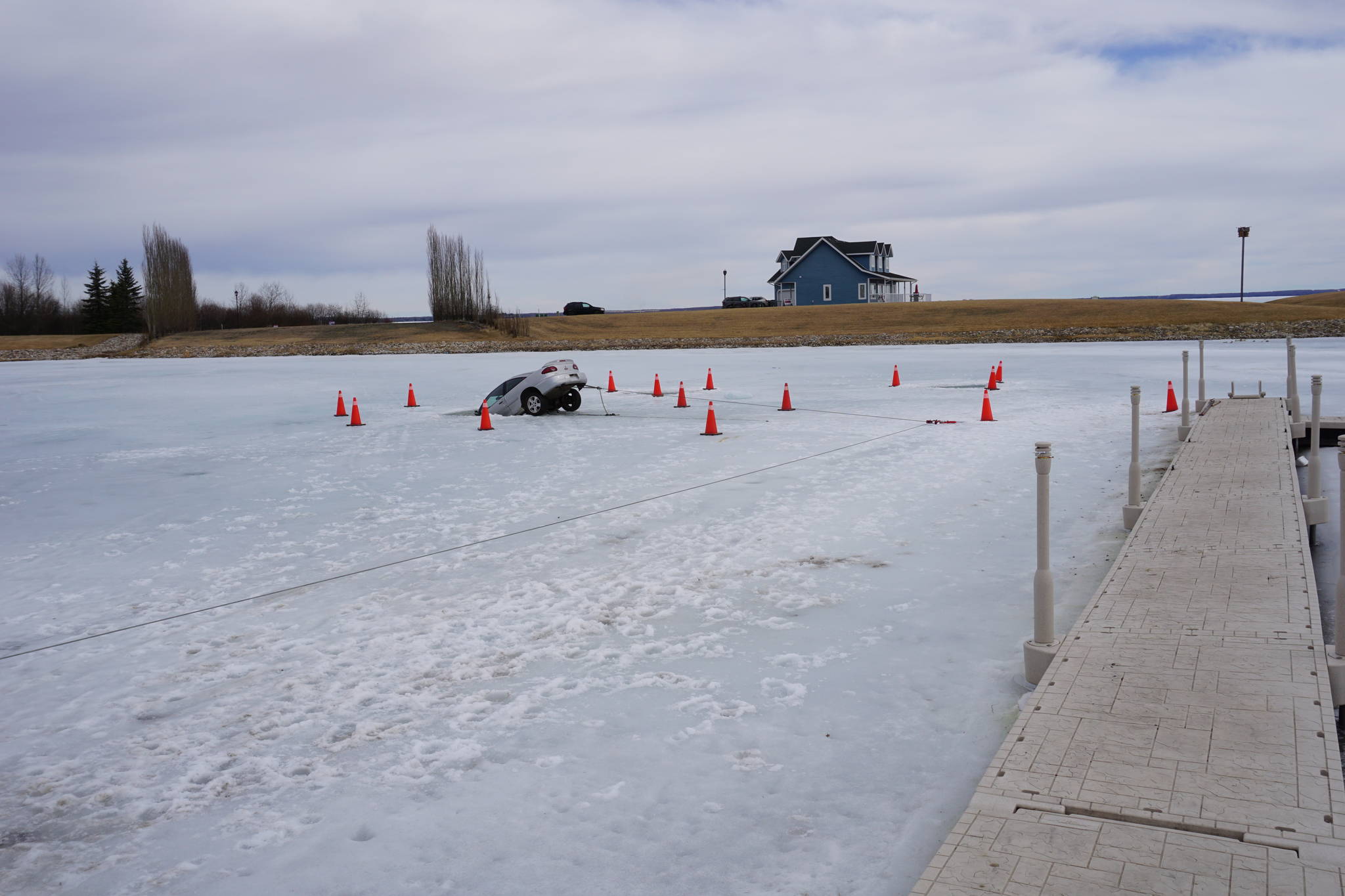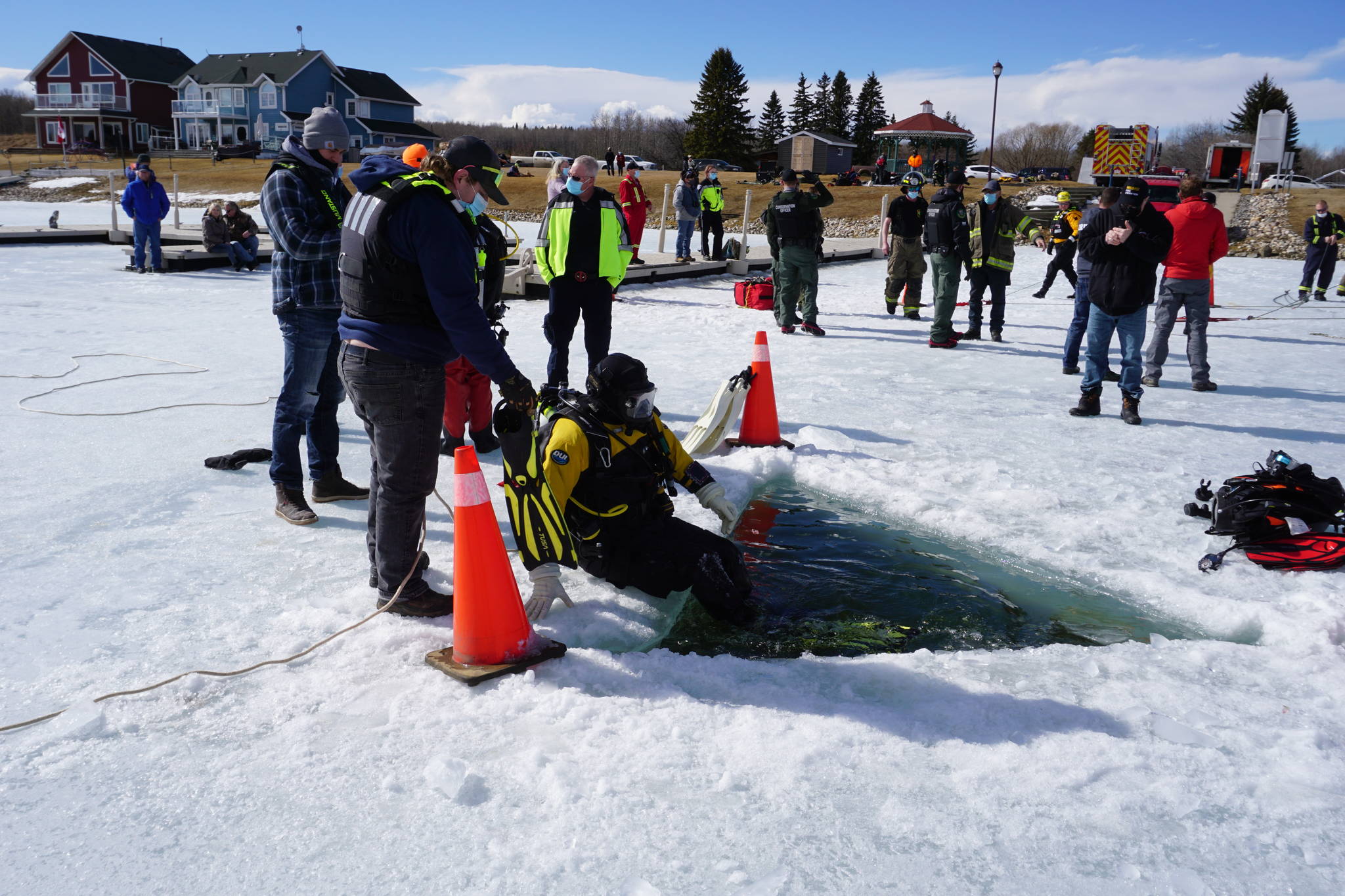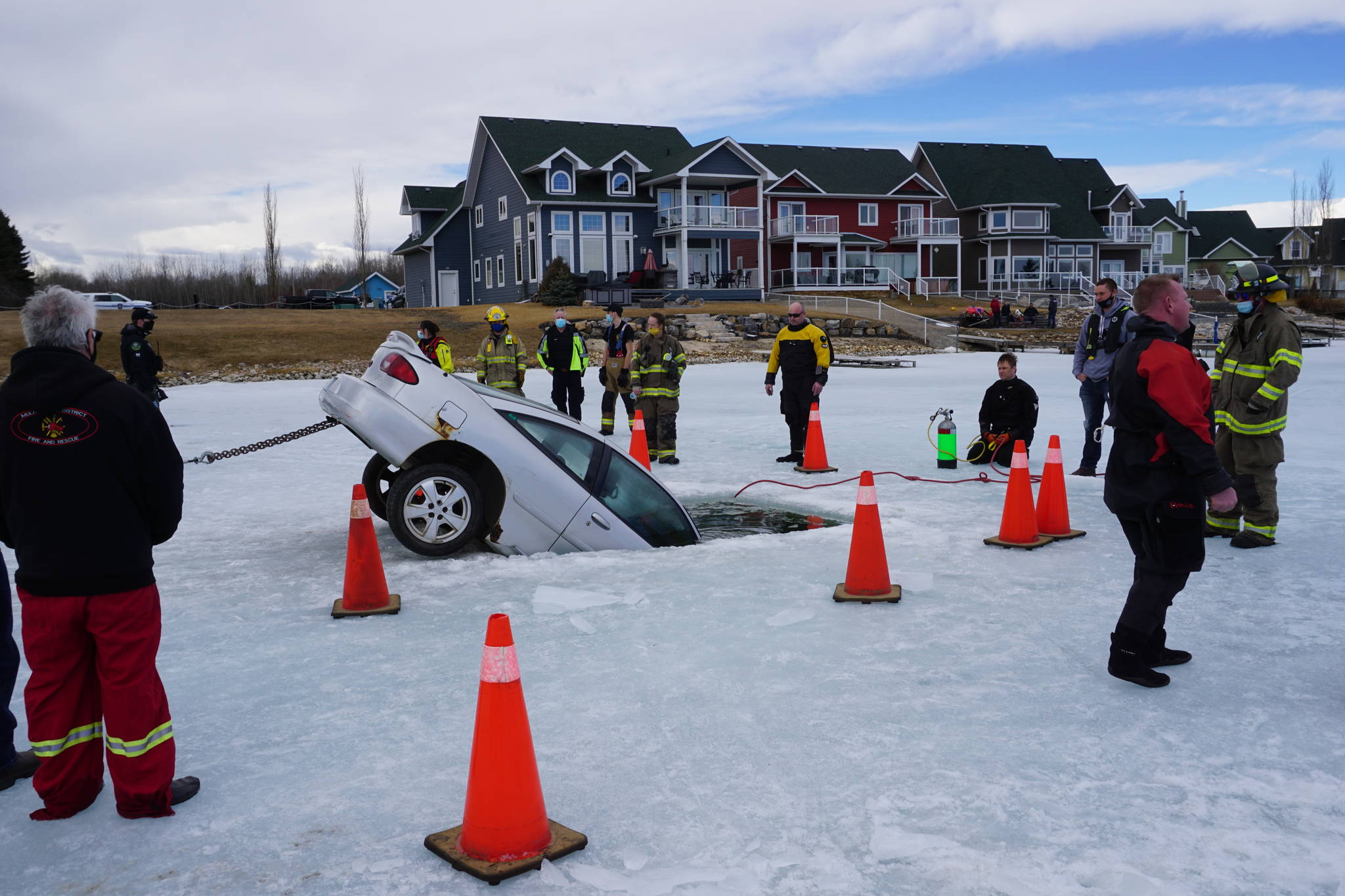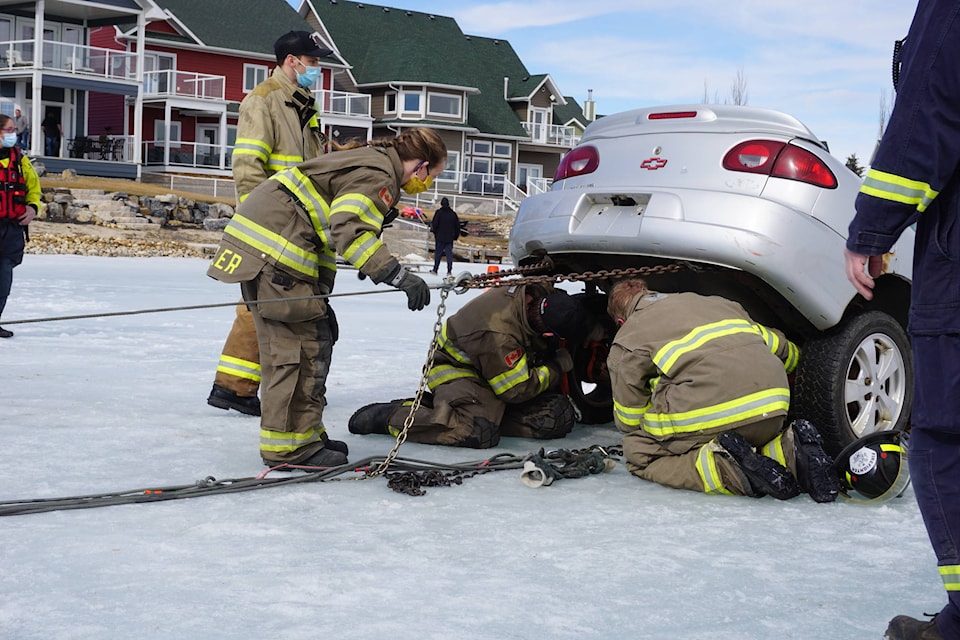For the second time, first responders from the County of Wetaskiwin gathered to train together on ice rescues and inter-discipline winter water rescues.
Put together by South Pigeon Lake’s Fire Chief, Wayne Benson, the training session which was approved by health authorities was set up with the intention of developing further coordination between multiple County emergency services including fire, RCMP, Central Alberta Rescue Diving Society (CARDS), County Wildlife Conservation officers and Parks and Wildlife officers, when on scene at an ice rescue.
In the morning there was training on ice rescues including helping save someone who has fallen through the ice. This was completed at the South Pigeon Lake Fire Department.
In the afternoon the responders headed to Sunset Harbour Marina for a vehicle retrieval scenario.
Benson’s main set up was to test the responder’s ability to create a solution to remove a car from the icy water without using a tow truck. Benson wanted responders to figure out a way that they could help if there was a situation where using a truck and winch wouldn’t be feasible.
Benson said that one of the things he learned right off the bat from the day of coordination with the different organizations, was that rescue divers cut the ice in the shape of a triangle to make their exit from the water easier.
Rescue diver with CARDS, Luke Jevne, explains that this makes it easier for divers to wedge themselves into a corner to get leverage out of the water.
Jevne continues that in an ice rescue situation, which are typically more vehicle recoveries than anything, the divers are always tethered.
“They are tricky, very tricky,” Jevne says about ice dives. “This time of year the ice can get rotten underneath and so it’s very unstable.”
“We don’t dive without a lifeline attached to us,” Jevne says.
Jevne says that ice is rotten when it begins to crystallize, and that is often the ice that washes up on shore. He says that rotten ice gives the illusion that ice is thicker and stronger than what it really is.
One thing that Jevne says about ice dives in general, “it’s hard on the body.”
The CARDS team came in on Saturday to not only practice some ice dives in prime conditions, but to show the fire department and others at the training session what water air bags under a car look like in action.
“Each bag can lift 2,000 lbs,” says Jevne. The divers will tie the bag to the car’s axels, wheels, etc. and then they can each individual bag to get the car buoyant before slowly bringing it up.
At the end of the day everyone ruled the ice training a success as they were able to try many different tactics for the retrieval of the vehicle and learned from each other what each departments role would be in a large-scale ice rescue situation.
shaela.dansereau@pipestoneflyer.ca
Like us on Facebook and follow us on Twitter



